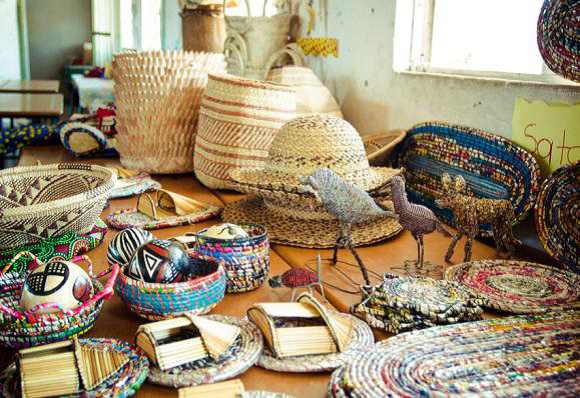
The International Labour Organisation (ILO) and the United Nations Educational, Scientific and Cultural Organisation (Unesco) say the majority of families in Binga, Lupane and Masvingo were surviving on the creative and craft sectors.
The observation was made following a study by the United Nations agencies that covered Harare, Bulawayo, Binga, Lupane, Masvingo and Mutare, corresponding to the concentration of cultural activity.
In the report based on the baseline survey on the state of the informal sector, ILO and Unesco said the significance of the informal economy in Zimbabwe could not be underestimated.
“The creative industries emerge and are largely incubated in cities, and thus it is important that they, as the engines of economic development, maintain an enabling environment for a dynamic creative economy," the report reads.
"However, there are also rural areas where the culture and creative sectors thrive.
“Lupane and Binga are examples of areas where women basket weavers participate actively in the creative economy, engaging in both local and international trade.
“In order to create a balance between rural and urban spaces, one of those two rural areas was covered by this baseline study."
The crafts sector in Zimbabwe includes basketry, weaving, pottery and wood carving, among others.
- ZCTU and ILO turn blind eye to pensioners’ plight
- Trade unions bemoan working conditions
- Zim govt railroads anti-labour laws: ITUC
- Letters: Zim needs wisdom more than money
Keep Reading
"These are uniquely identified and closely linked with different cultures, examples being Binga Baskets, Honde Valley Baskets, Lupane Baskets and Nyanyadzi Baskets, mostly located within rural communities,” the report reads.
“Crafters are generally organised into small groups and/or clubs where they work collectively on their crafts and benefit from the opportunity to share ideas, while some work as individual artists in their homes.
"Most of the crafters in rural communities are closely linked to community-based organisations (CBOs) that assist with capacity building, product quality assurance, marketing, pricing and sales, as well as the logistics needed to access raw materials and transport products.
“Notable among these organisations are the Lupane Women’s Centre, the Binga Crafts Centre and the Nyanyadzi Arts Centre."
Indications are that despite its potential, Zimbabwe’s creative economy remains largely informal.
Available statistics indicate that the majority are turning into the informal sector due to lack of formal jobs as companies are either closing or downsizing due to the harsh economic climate.
"It also establishes that the creative economy is dominated by own-account workers or free-lancers (93%) with only 7% being salaried/paid workers employed by registered enterprises," reads the report.
Indications are that the informal sector within the creative economy of Zimbabwe, like other African countries, is driven by rigid formalisation processes, lack of government incentives for formalisation and lack of knowledge about formalisation among business operators.
"However, despite these promising earnings, the working conditions for professionals in the creative sectors operating in the informal economy are far from conducive,” the report said.
“For example, professionals such as tailors in the fashion industry claim that they work far beyond the statutory working day of eight hours to meet their customers’ demands and make more money."
"Key informants indicated that cultural and creative sectors operating in the informal sector of the creative economy are characterised by a survivalist approach, although they remain the most immediately accessible source of livelihood for a wide spectrum of people, including youth and women.”
Workers in the creative economy are also not unionised, nor are the employers registered with the relevant national employment councils, the report said.
The report said 91%of the key informants were not members of any trade union.
"They become vulnerable to unpaid work since the majority of them prioritise exposure to markets over fair remuneration,” the report added.
“Women face challenges within the operational context of the creative economy.
“Majority of the respondents, especially from the live music and theatre performances sectors, reported sexual harassment, as being a key barrier to participation."
Streetwise Informal Traders Association director Percy Mcijo said the sector was not formalised because of the tough registration requirements and exorbitant fees.
"These businesses do not even have the capacity to pay for the city council monthly vending fees,” Mcijo said.
“It's a hand to mouth state of affairs.
“The main challenge is the low income realised from their sales.”









